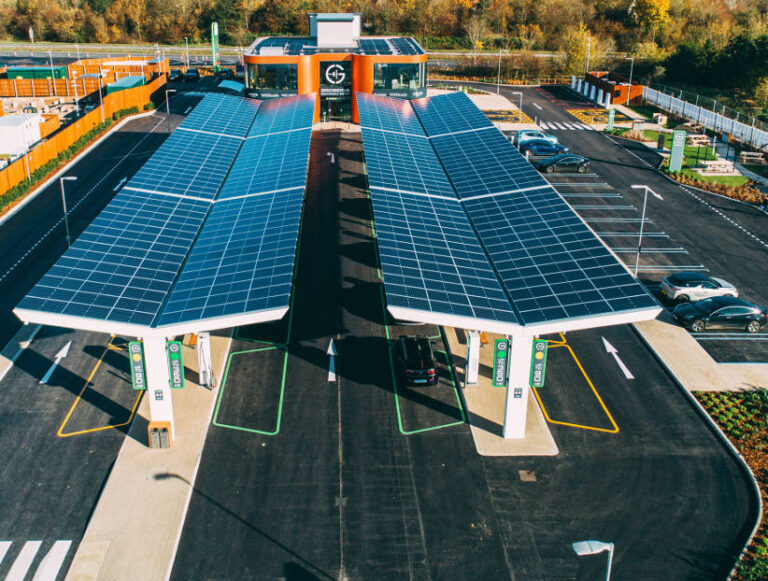– By Dunstan Power –
Australia’s abundant sunshine could turbocharge vehicle EV growth to mirror initiatives being implemented in France where solar PV canopies are to be mandated for public carparks, according to Dunstan Power, Managing Director of global EV charging component group Versinetic.
Australia’s ability to leverage its solar capability could help spur the growth of more public charging infrastructure. France’s public carpark initiative is expected to generate about 11 gigawatts of energy, which is enough to power nearly eight million homes or 10 power stations. However, it has much less sunshine than Australia, averaging at around 2000 hours per year, compared to an average of 2800 in Australian cities.
If Australia adopted a similar policy, it could generate substantially more electricity per installation to offset power requirements for EV chargers. Solar car ports have the added benefit of shading and so cooling cars reducing the need for air conditioning when drivers return.
Investment in public charging infrastructure is critical to accelerate the transition to EVs. In the UK, the ratio of EVs to public chargers has grown from five cars per charger in 2015 to 19 per charger in 2023. In contrast, Australia’s ratio is 23 cars to each public charger. Yet the country’s EV ownership is equivalent to the UK in 2019 when there were approximately six cars per charger.
“Statistics like these are a cause for concern given the gargantuan task Australia faces in catching up with other leading economies,” Power said.
“The fear is that unless there is a mix of tax breaks and charging infrastructure investment that Australia could remain an EV backwater despite the strong domestic appetite for EV technology. This year, EVs comprise about 7.4% of new car sales in Australia compared to 16% in the UK and a staggering 79.3% in Norway, which remains the world EV leader.”
However, new technology combined with Australia’s climate could radically tip the scales to make the nation an EV powerhouse. Vehicle to Grid (V2G) technology allows EVs to put power back into the grid, rather than just taking it for charging. Australian EV drivers have been quick to seize on this opportunity, using smart chargers to power their cars from the photons hitting their solar panel-covered roofs.
In the future, V2G means that not only can the car be charged when it’s sunny, but it can discharge from the car to power your house at night time This technology combined with solar canopies has the potential to reduce the net import power requirement in arrays of public chargers.
Countries, such as Denmark, have been experimenting with the commercial possibilities of V2G to recompense drivers for selling their electricity. It offers great potential for Australia given the high PV uptake compared to cloudier countries.
The problem with V2G is the lack of uptake to date by the auto manufacturers, with only a few models (notably Nissan) supporting it. However, this is changing. VW announced support in its future models for V2G and added software support to the latest international charging standards.
Once this happens, Australia will be one of the best placed countries worldwide to capitalise on V2G to reduce emissions, stabilise the energy grid and give drivers the chance to drive and potentially power their house for free.
Dunstan Power is the Managing Director of Versinetic, a UK based EV charger development consultancy and author of forthcoming book Tech Success.






